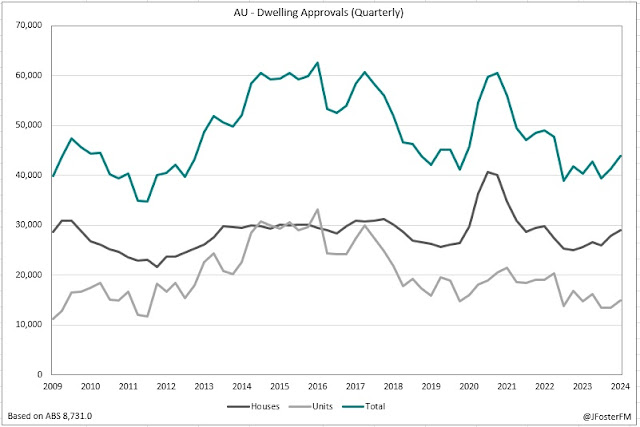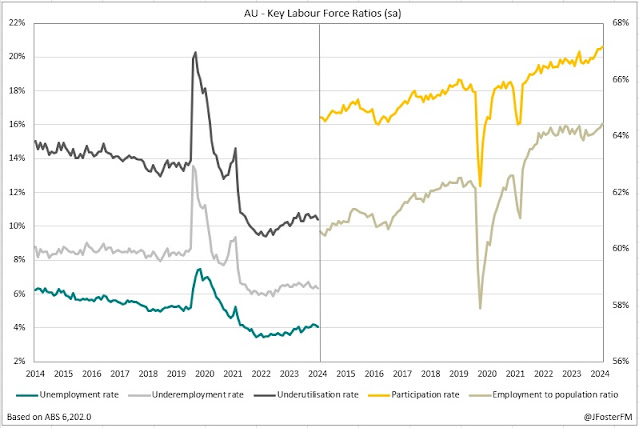Australian housing finance commitments saw their first fall in 8 months easing by 0.3% in September, missing the 1% rise expected. Commitments slowed from the prior month (2.1%) as lending to investors fell by 1%; owner-occupier commitments were broadly flat (0.1%). Lending has defied higher interest rates accelerating by almost 19% over the past year as strong demand for housing has run up against supply constraints, driving credit growth (5.1%yr) and housing prices (6.0%yr). The ABS has confirmed today the housing finance series will shift from a monthly to a quarterly frequency, returning in February 2025 covering Q4 2024.
Housing finance commitments posted a month-on-month decline for the first time since January - albeit a very modest one down by 0.3% in September to $30.2bn. Despite higher interest rates reducing borrowing capacity and affordability being pressured by rising housing prices, commitments have risen by 18.9% over the year and are up 28.8% on the cycle low ($23.5bn) seen in February 2023.
This cycle has been driven by investors, with owner-occupiers playing a supporting role. Despite falling by 1% in September, commitments to investors lifted by 7.1% across the quarter - up 29.5% on 12 months ago. At $11.6bn, monthly lending to investors is just below record highs, with rising housing prices and rents amid very low vacancy rates providing an attractive backdrop. Owner-occupier commitments - largely unchanged in September (0.1%) - saw a 3.2% rise in Q3. Lending to the segment was $18.6bn in the most recent month, up 22.8% on the recent low in July last year.
Taking a closer look at the owner-occupier segment, the effects of higher interest rates and affordability concerns are visible in parts of the market. The value of construction-related lending was down 2% in the quarter, matched by a 4.7% fall in underlying loan volumes. Meanwhile, first home buyer lending slowed to a 0.4% rise in Q3 - down from an 8.1% acceleration in Q2 - with loan volumes contracting 0.9%q/q. This left upgraders - existing home owners - to drive quarterly growth in owner-occupier lending rising by 4.4% on a 1.6% lift in loan volumes.
Refinancing has held a broadly flat level since the turn of the year after retracing from the highs of mid-2023 alongside the RBA's hiking cycle. In September, owner-occupiers (3.5%) lifted total refinancing to a 2.1% rise, overcoming a decline (-0.4%) from investors. For Q3, refinancing advanced by 1.5% on gains for both owner-occupiers (1.7%) and investors (1.2%).











































